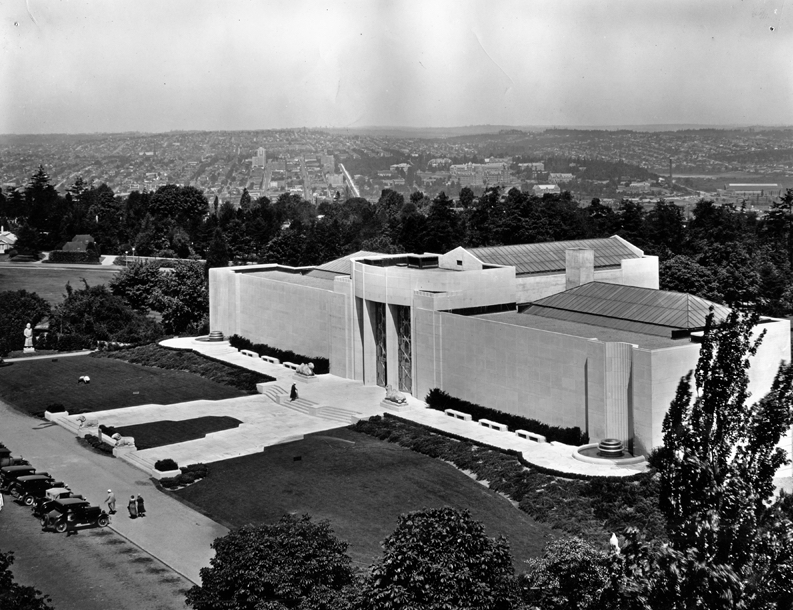-
The wheelchair accessible path can be found on the south side of the museum’s front lawn.
-
Seattle Asian Art Museum
Volunteer Park Concourse
The Seattle Asian Art Museum was the original home of the Seattle Art Museum. The building, completed in 1932, was designed by Carl Gould, a prominent Seattle architect who also designed 18 buildings on the University of Washington campus and the Administration Building at the Ballard Locks. He also designed the Burke Memorial that is located on the south side of the reservoir in this park.
The museum replaced the concert grove and pergola designed by John Charles Olmsted. Olmsted had opposed construction of an art museum in the park when it was originally proposed in 1910 on the grounds that a landscape park such as Volunteer Park was not the appropriate location for a building because it would detract from people’s experiences in the park.
Olmsted died in 1920, so, when Seattle art collectors Dr. Richard Fuller and his mother Margaret Fuller offered to build an art museum for the Art Institute of Seattle in 1931, the project was approved.
The Fullers were important supporters of the development of a city art museum. They were deeply involved in the Seattle Fine Arts Society, which was established in 1909. The society’s collection was displayed at the home of Horace Henry on Harvard Avenue East near Prospect Street. In 1929 it changed its name to the Art Institute of Seattle and in 1930, Richard Fuller was elected president of the organization.
Carl Gould designed the building in the Art Moderne style. It was the first museum in the United States designed in that style. The façade features Wilkeson sandstone, and the entryway is an early example of the use of aluminum as an exterior decorative element. The landscape immediately surrounding the building was planned by Noble Hoggson, a local landscape architect. During his career, he also designed landscapes for several homes in the Highlands, the Bloedel family estate on Bainbridge Island that is now the Bloedel Reserve, and for the U.S. Navy at the Sand Point Naval Air Station.
When the museum opened in the park in 1933 the collection consisted of the Seattle Art Museum’s small collection and the Fullers’ collection of Asian Art.
The building was home to the museum until 1990, when most of its collection was moved downtown to a new, larger facility at 1st and University. The Volunteer Park building then became the Seattle Asian Art Museum. The Fullers’ collection remains an important part of the museum’s collection.
Also in 1990, the Parks Department renovated the building’s forecourt, altering the planting beds and replacing the boxwood hedge with Osmanthus plants along the upper terrace. The museum’s new addition (on the east side of the building) and interior renovation was completed in early 2020.
To reach the next stop, we recommend walking through the east side of the park. Walk back out to the sidewalk along the concourse and turn left, toward the Water Tower. At the path junction just before your reach the circular drive, turn left and walk down the hill toward 15th Avenue E. At the next fork in the path, stay left and follow the path down and around toward the back of the museum, where it will join the main path heading north. Continue straight ahead and then stay left at the next fork. Continue to the park drive where you will see the playground. Cross the drive and walk into the playground.



